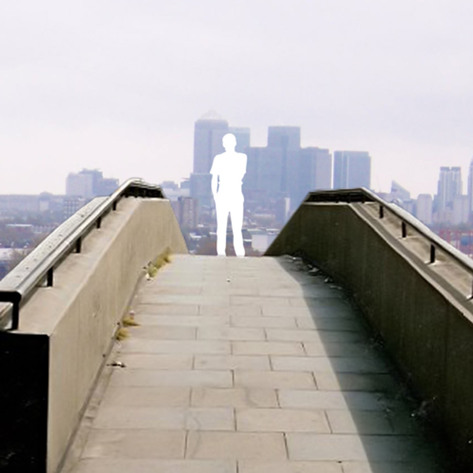SlipStream (v)
Date: 28th May 2011In spring 2010 Peckham Space selected artist David Cotterrell to work with residents from north Peckham on a project that would address the theme of identity for the area. The resulting project, Slipstream, proposed to make a new film taking north Peckham residents’ narratives of how their landscape has changed over the last 45 years as its starting point.
Slipstream is filmed from the air using a specially-constructed aerial drone, exploring airspace previously occupied by buildings, relaying lost views of Peckham and the wider area. This journey investigates a landscape researched through found footage, archived maps and the photographic and printed material supplied by the participants.
Slipstream is an experiment, which aims to enable the residents’ memories rather than the area’s current architecture to guide the navigation of space.
In mapping and planning cities, the physical environment dominates our perception. We explore the landscape via satellite photography and schematised road maps. Decisions made about architectural need, failing and success are informed by statistical analyses and articulated through area-wide strategies.
Cities are complex. The reasons for loyalty, affection, anxiety and alienation are personal and individual; and while the generalised views can offer a representation of the landscape, they alone cannot provide empathy with the experience of living within it. Whether considering the shift of perspective gained from knowing the name of a friend living at the flat you are walking past or the experience made possible from standing on a platform seven metres higher than the pavement that now exists, the challenge is imagining the experience of others.
The alternative to the God’s Eye View perspective of masterplans is not obvious or simple. If you attempt to document the first person view, any pretence at objectivity is lost. The choice of whose view we represent as significant or important is inherently hierarchical and if we attempt to document all possible perceptions of space, the archive will become near infinite and impenetrable.
This project does not introduce a better way to understand space, a more democratic representation or an alternative to existing systems. The project represents a convoluted and labour-intensive journey to replicate views, which might at one point have been simple to attain. The views of a landscape defined by an architectural experiment in platform living are not represented because they are the most important or the most universal reference to the experience of the area. They are approximated and represented here to remind us that for each resident, visitor and stranger the understanding of place is composed of the combinations of views – real, imagined, remembered and abstracted.
The idea that some walking amongst us may remember inhabiting and traversing space, which is now simply a volume of air, offers a gentle reminder of the need to look beyond the maps and plans when describing our homes and why they mean something to us.
Materials:2-channel HD DVD Video Installation

